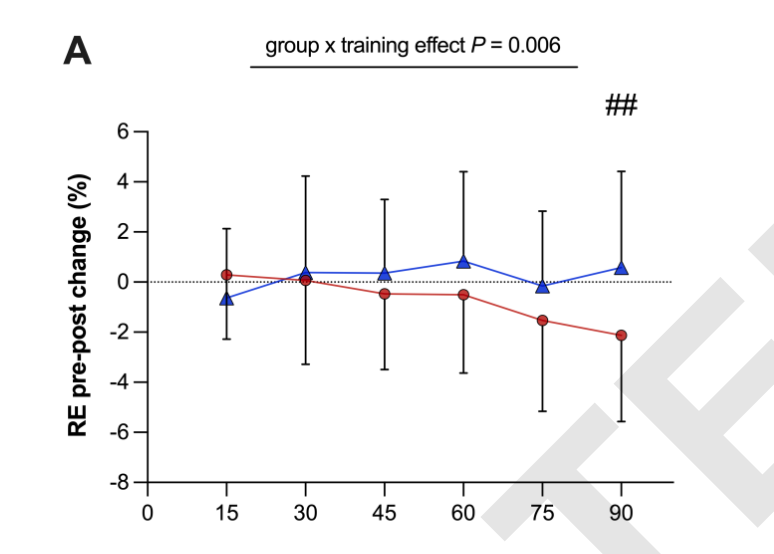Staying healthy and improving performance are top priorities for runners. This article dives into recent research on strength training, breathwork, beetroot extract, and the crucial role of nutrition in preventing injuries. We’ll also cover pacing strategies and the often-overlooked aspect of physiological resilience. Whether you’re training for a marathon or simply aiming to improve your running experience, these insights will help you run longer and healthier.
Strength Training Makes Runners More Durable
Most runners know strength training is beneficial, but understanding the extent of its impact is key. A study at Loughborough University provides compelling evidence on this topic.
Researchers conducted a 10-week trial with 28 well-trained male runners, dividing them into two groups: endurance-only and endurance + strength. The latter group added twice-weekly strength sessions to their routine, including squats, leg presses, calf raises, and plyometrics.
The results showed that the strength-trained group maintained better running economy as fatigue set in. After 90 minutes, their running economy improved by 2.1%, while the endurance-only group worsened by 0.6%. The strength-trained runners also showed better metabolic efficiency and a 35% improvement in time to exhaustion, compared to an 8% decline in the endurance-only group.
This suggests that incorporating strength training can significantly enhance a runner’s durability and ability to sustain high-intensity performance on fatigued legs.
What this means for runners
Consider adding two strength sessions per week, focusing on:
- Maximal Strength: Squats, leg press, and calf raises (~80–90% 1RM).
- Plyometrics: Drop jumps, bounds, and hops for improving force production.
Keep sessions short (~45 minutes) and separate from key running workouts.
Can You Breathe Your Way to Better Performance?
Breathwork is gaining popularity in endurance training, with claims of performance enhancement through nasal breathing and breath-holding techniques. But is there scientific backing?
A study tested whether a four-week breathwork protocol could improve running performance in recreational runners. Sixteen runners were split into breathwork and control groups.
The breathwork group added daily breathing exercises and nasal-only breathing during low-intensity training. Both groups followed a polarized running program for four weeks. Researchers measured breath hold time, maximal oxygen uptake, and running economy before and after the intervention.
Breath-hold time increased significantly in the breathwork group, but there was no difference in VO₂max or running economy. This suggests that while breathwork can improve breath-holding capabilities, it may not directly translate to better endurance performance.
How to apply this to your training
If you’re looking to increase breath-hold time or experiment with CO₂ tolerance, breathwork might be worth incorporating. But for improving endurance performance, focus on high-quality running workouts.
Is Beetroot Extract a Performance Enhancer?
Beetroot is often touted as a performance-enhancing supplement due to its high nitrate content. But what about betalains, the bioactive pigments in beetroot? A study tested a betalain-rich concentrate without the nitrate boost.
Researchers studied 17 male recreational runners, who consumed either 100 mg of betalain-rich concentrate or a placebo. They performed running economy tests, a maximal treadmill test, and post-exercise recovery assessments.
Oxygen consumption was similar between the beetroot and placebo conditions. However, runners taking beetroot concentrate had a lower heart rate at 80% of VO₂max and lower max heart rate, lower perceived effort, and higher muscle oxygenation post-exercise.
While beetroot concentrate alone didn’t improve running economy or VO₂max, it suggests potential cardiovascular and recovery benefits.
So, should you take beetroot concentrate?
The lower heart rate and improved post-exercise oxygenation suggest potential benefits, so it might be worth trying if you’re training hard and struggling with recovery or soreness.
A Diet Lacking These Two Nutrients Ups Injury Risk
Diet plays a significant role in staying healthy and preventing injuries. A systematic review and meta-analysis examined how dietary intake impacts running-related injury rates.
The review analyzed 15 observational studies with 5,942 runners. Researchers examined macronutrient and micronutrient intake, total energy intake, dietary patterns, and disordered eating risk.
Female runners with lower total energy and fat intake had a significantly higher injury risk. Runners with lower dietary fiber intake also had a higher risk of bone stress injuries.
This reinforces the importance of proper fueling for injury prevention, especially for female distance runners.
What this means for runners
If you’re constantly dealing with injuries, your diet could be playing a bigger role than you think. Prioritize comprehensive nutrition to perform well.
Fluctuating Your Pace During a Race is Making You Slower
Consistent pacing is crucial for efficient running. A study compared constant vs. fluctuating pacing during a 10K run.
Researchers had 10 male endurance runners complete two 10K treadmill trials: one at a constant speed and another at a fluctuating speed. Finishing time was identical in both trials.
However, fluctuating pacing significantly increased blood lactate levels, suggesting a greater reliance on anaerobic metabolism. Oxygen utilization and breathing rate were also higher, indicating that fluctuating pace was less efficient.
What this means for your next race
Avoid unnecessary fluctuations in speed to conserve energy and maintain efficiency. Stick to a plan and resist the urge to surge too early.
Physiological Resilience: The Missing Piece in Endurance Performance?
Physiological resilience, or an athlete’s ability to resist functional decline during prolonged effort, may be crucial for endurance performance. This refers to how well an athlete maintains their aerobic capacity, economy, and metabolic efficiency over time.
Key training strategies to enhance resilience include:
- High training volume over years.
- Long runs with progressive efforts.
- Workouts at race pace or faster.
- Strength and plyometric training.
- Carbohydrate intake during exercise.
What this means for your training
Focus on maintaining physiological function over time through these strategies.
In conclusion, optimizing running performance involves a multifaceted approach. Strength training enhances durability, while the impact of breathwork may be limited. Beetroot extract shows potential for cardiovascular and recovery benefits, and proper nutrition is crucial for injury prevention. Consistent pacing and training for physiological resilience are also key.
By incorporating these strategies, runners can improve their performance, prevent injuries, and achieve their goals. Remember to listen to your body and adjust your training accordingly.
